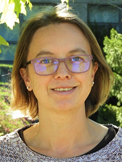Energy reserves in the water louse Asellus aquaticus (Isopoda, Crustacea) from surface and cave populations:seasonal and spatial dynamics
Zidar P, Škufca D, Prevorčnik S, Kalčíková G, Jemec Kokalj A [ site ] Fundamental and applied limnology, 2018
The depletion of energy reserves in animals has already been recognized as a useful indicator of environmental pollution with potentially high ecological significance. However, apart from being affected by pollution, en- ergy reserves in organisms also vary depending on natural abiotic and biotic factors. Seasonal and spatial dynamics of energy reserves in Asellus aquaticus (Isopoda, Crustacea) are presented here to determine the reference values of energy biomarkers. Asellus aquaticus are abundant and ubiquitous freshwater crustaceans and, as such, very suitable organisms for biomonitoring. Individuals were collected in spring, summer and autumn at two surface localities and one cave locality along the sinking river Pivka (Slovenia), and analysed for lipid, carbohydrate and protein content. The obtained values of energy reserves are discussed together with the physical and chemical parameters of water determined at the time of sampling. The surface-water populations in particular show a seasonal and spatial variability of energy reserves. Carbohydrates follow a distinct seasonal pattern of decreasing values toward autumn in all three populations. The spring protein content in both surface populations is much lower compared with the sum- mer and autumn levels, while no distinct pattern was observed for lipids. The quantity of energy reserves in cave specimens does not differ much from the surface ones, but are less variable. Our data reveal that energy biomarkers differ between both season and locality, which should be taken into consideration in biomonitoring studies. We also suggest the use of only male specimens of comparable size where possible. To enable a valid comparison between different studies, the methods for the analysis of energy reserves should be harmonised.
